Decolonizing the Occupy Movement
From the Series: Occupy, Anthropology, and the 2011 Global Uprisings
From the Series: Occupy, Anthropology, and the 2011 Global Uprisings
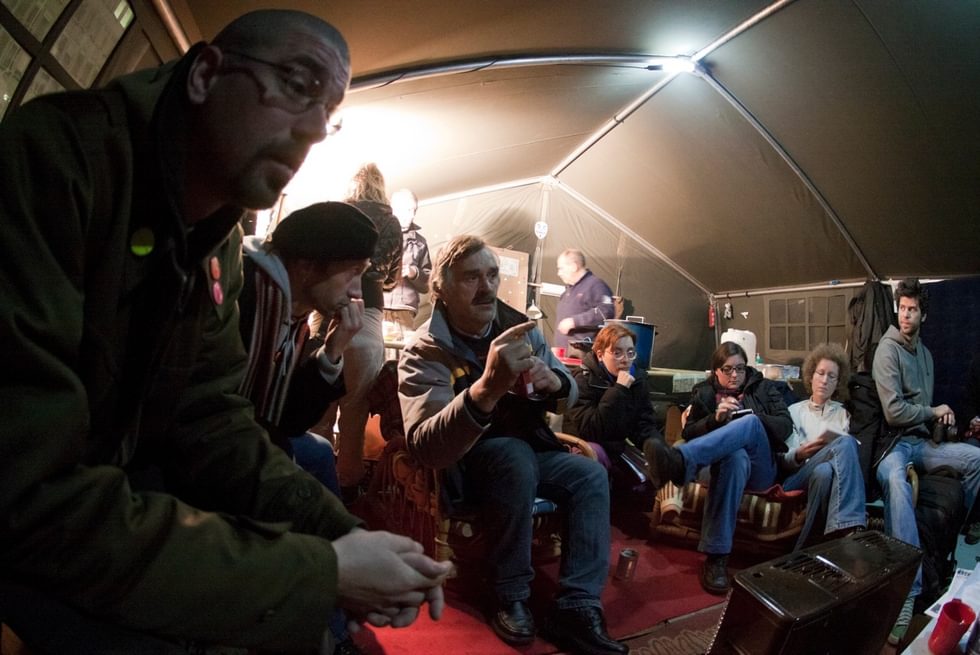
When the Great Recession sank its fangs into the veins of this country on December 2007, for the first time, millions of white people woke to a different world. Unemployment and poverty are not unfamiliar bedfellows to people of color: Black unemployment has been at least double that of the rate for whites from 1973 to 2009; while Latinos were 1.5 times more likely to be unemployed than whites for 28 out of the 37 years.[1] The white middle class wasn’t able to get a job or pay their mortgage or healthcare bills. They were in danger of losing their homes to foreclosure or were forced to apply for food stamps for the first time.[2] In short, the white middle class joined the ranks of people of color who have faced unemployment, low wages or poverty, and lack of wealth and assets throughout the history of this country.[3]
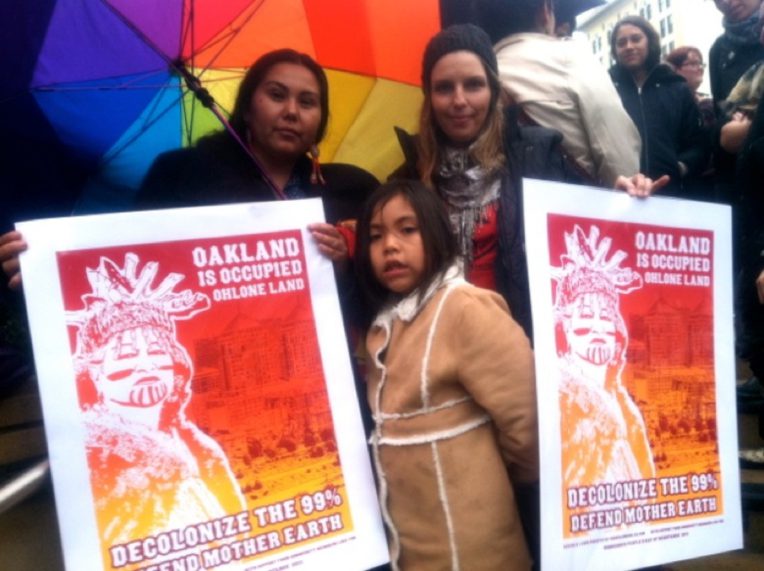
It should not be surprising that two years later, after the recession technically ended (June 2009 according to the National Bureau of Economic Research)[4], yet unemployment stayed steady at 9.1%,[5] thousands of white middle class, many young and college-educated, but with no hopes of breaking into a job market, answered the call to Occupy Wall Street.[6] Many flocked to Zuccotti Park, eerily close to the negative space of Ground Zero, to roll out sleeping bags onto hard concrete, claiming to be the 99%, exploited by the 1%. Surveys, such as those conducted by Occupy Research, confirmed what many of us already knew: over 80% of Occupy participants identified as white.[7]

Focus group conversations with youth organizers involved in Occupy in three cities, Oakland, New York, and Atlanta [8], yielded insights about how race is conceived in this movement.[9] In both Oakland and Atlanta, cities with strong traditions of racial justice movements, focus group participants identify their actions as distinct from entrenched nonprofit institutions (often referred to in conversation as the “nonprofit industrial complex”). “Nonprofits led by people of color are pissed that they weren’t asked to join Occupy Oakland,” explained Oliver, a white man in his early 20s, who favored long hair topped by theatrical flourishes, such as a top hat.[10]
In Atlanta, Anna, a single mother in her late 20s originally from Eastern Europe, named Camus and Sartre as authors that influenced her politics. She and her son lived with a Black family in a rapidly gentrifying working class neighborhood, helping the family to defend their home from foreclosure. Anna explained the city’s politics, “The ossified Black civil rights leadership has been bought off; they don’t allow grassroots movements to flourish. Nonprofits kill movements. They replace [movements] with themselves.”
Emily is a 19-year-old white woman who moved to Atlanta from the surrounding suburbs a year ago. She wore a t-shirt advertising a punk band, with an anarchy A in the logo, and sat for most of the conversation with her knees hugged to her chest. Emily remarked, “Troy Davis was a huge thing here. The Black leaders urged us all to vote and pray, yet [Davis] was still murdered. It was a turning point, where we started to reject the vote and pray stuff.”
Aisha is an 18-year old Black woman who smiled to reveal a mouthful of braces. She lived in another home being defended from foreclosure, located in a neighboring suburb, owned by a former Black Panther. Aisha added, “Blacks are always affected by things like police brutality or the recession, but our leaders just tell us to be good, ‘pray and vote.’”
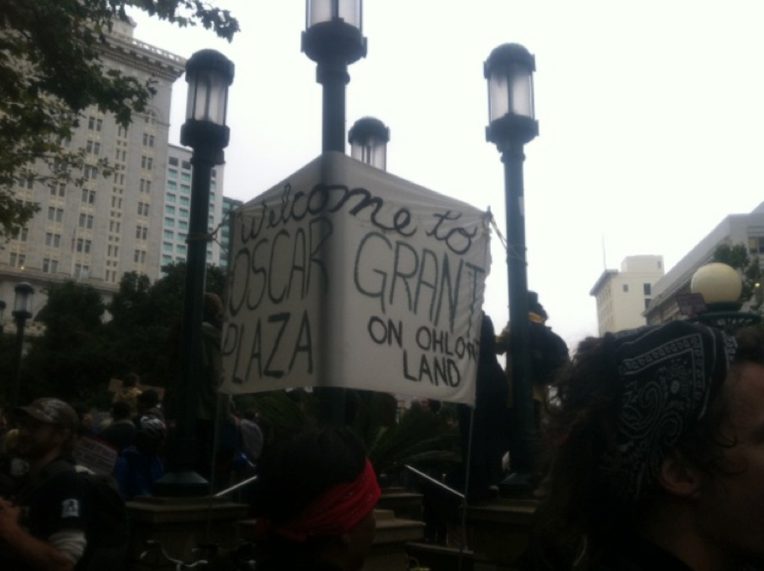
Almost everyone I talked to concurred that racial disparities were important for Occupy to address. Nathan, a 22-year old white male in New York, thought, “You can’t talk about the financial crisis without talking about race. The movement fails if it doesn’t address race as a pillar, along with sexism and patriarchy. You need an intersectional analysis.” However, white participants were more likely to be “colorblind” in their view of economic inequalities and movement processes. “Capital doesn’t discriminate,” stated Oliver, “Asians make more than whites.” Tom, a 30-year old white male in Oakland, who arrived with a giant rucksack stuffed with a sleeping bag and his clothing covered in travel dust, complained, “I am lumped unfairly as a white middle class male; bigotry cuts both ways.”
Liberal commentators, such as Chris Hedges, have attempted to divide the movement into good, nonviolent activists versus bad, violent troublemakers.[11] This debate has plagued other movements before, such as the alter-globalization movement, with violent tactics conflated with those who adhere to an anarchist orientation. Although several voices within Occupy have criticized this conflation [12], youths in the focus groups uphold the correlations, perhaps unconsciously. Emily, for instance, described Occupy as a “white organizing culture,” where “the consensus model pushed people of color away.” She thought that when “Representative John Lewis wasn’t allowed to speak out of process, people defended the process… But, defending that process was defending white organizing culture.”
Oliver in Oakland cited a Black Panther party leader who praised anarchists for being willing to take direct action.[13] But, he referred to anarchists as “white kids”, thereby assigning a racial identity to a philosophical tradition, ignoring any heterogeneous identification within the community. “Brother Freeman says people of color run nonprofits, but white kids get stuff done.” Again, there is the equation of the politics of representation with an entrenched leadership, protecting the status quo.
While these binaries of nonprofits/insurgence, people of color/white anarchists, nonviolence/violence from past movements persist in Occupy, I take hope in the Occupy generation, those newly politicized who are encountering the vagaries of race, class, gender, and sexuality in daily life. They are crafting a new politics that synthesizes an intersectional analysis with their thirst for a better world. Nick, a white male in his late 20s in New York, said that his vision of a better world was a temporary autonomous zone, without state or capital. He remembered being in the Occupy Wall Street kitchen one day, where a young woman of color asked a white man to clean the dishes he left in the sink. “The young white man said to her, ‘You do it, I’m doing important work.’ But, who’s going to do the important work of washing dishes?”
Langley, a 20-year old white male who wore an oversized green army jacket that engulfed his thin frame, contemplated Nick’s question for a minute. He and a friend were the only white residents of a home in East New York, which was liberated by the movement in early December.[14] “Doing the dishes is revolutionary.”
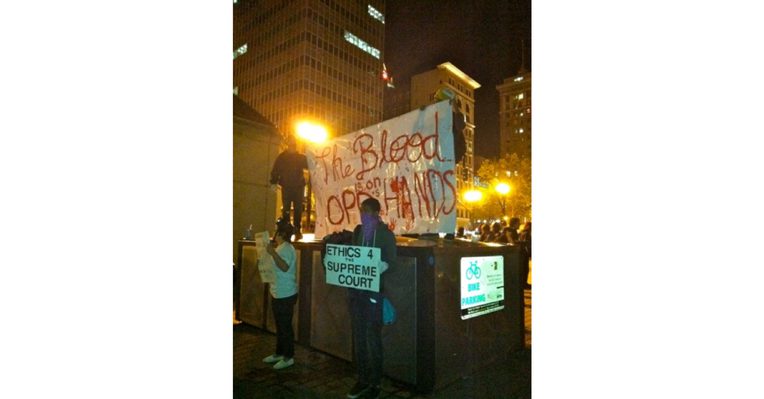
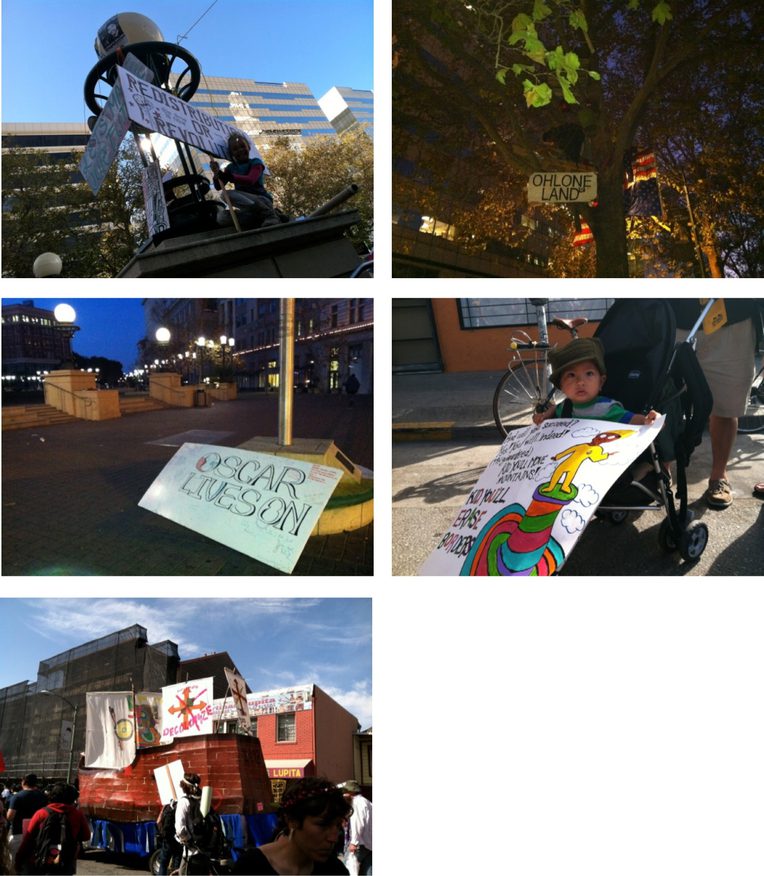
[1] Applied Research Center. May 2009. Race and Recession: How Inequity Rigged the Economy and How to Change the Rules. http://arc.org/recession (accessed 5/13/12).
[2] Appelbaum, Binyamin and Robert Gebeloff. 2/11/12. Even Critics of Safety Net Increasingly Depend on It. NY Times. http://www.nytimes.com/2012/02/12/us/even-critics-of-safety-net-increasingly-depend-on-it.html (accessed 2/13/12).
[3] Sullivan, Tim et al. 1/12/12. State of the Dream 2012: The Emerging Majority. United for a Fair Economy. http://www.faireconomy.org/dream (accessed 4/15/12).
[4] US Business Cycle Expansions and Contractions. 9/20/10. National Bureau of Economic Research. http://www.nber.org/cycles/cyclesmain.html (accessed 4/15/12).
[5] Employment Situation News Release. 10/7/11. Bureau of Labor Statistics. http://bls.gov/news.release/archives/empsit_10072011.htm (accessed 4/15/12).
[6] Unemployment rates for young adults between 20 and 24 in age are higher than that of the general population. But, youth of color face higher rates consistently over time. From 1977-2009, the highest rate of unemployment for white youth, 13.9% in 2009, does not reach even the lowest rate for Black youth, 14.3% in 2001. (ARC, 2009, Race and Recession).
[7] Preliminary Findings: Occupy Research Demographic and Political Participation Survey. 3/23/12. Occupy Research. http://www.occupyresearch.net/2012/03/23/preliminary-findings-occupy-research-demographic-and-political-participation-survey/ (accessed 4/15/12).
[8] Youth defined as anyone between the ages of 18 and 30.
[9] Focus groups sponsored by the Applied Research Center (publisher of Colorlines.com). Each group had 10-12 participants; the gatherings were publicized through Occupy social networks.
[10] Names have been changed to maintain anonymity.
[11] Hedges, Chris. 2/6/12. The Cancer in Occupy. TruthDig. http://www.truthdig.com/report/item/the_cancer_of_occupy_20120206/ (accessed 4/15/12).
[12] Graeber, David. 2/9/12. Concerning the Violent Peace-Police. N+1. http://nplusonemag.com/concerning-the-violent-peace-police (accessed 4/15/12).
[13]Soynoise. 7/14/08. What does Black Panther Party think about Anarchist? http://www.youtube.com/watch?v=tHCrueoYYuA (accessed 4/15/12).
[14] Harkinson, Josh. 12/6/11. Occupy Movement Targets Foreclosed Properties. Mother Jones. http://motherjones.com/politics/2011/12/occupy-our-homes-wall-street-squatters-foreclosures (accessed 4/15/12)
Yvonne Yen Liu is a senior researcher at the Applied Research Center, publisher of Colorlines.com, and a PhD student at the CUNY Graduate Center. She is a member of Smart Meme's board, the advisory committee for the Food Chain Workers Alliance, and the Occupy Oakland Research working group.